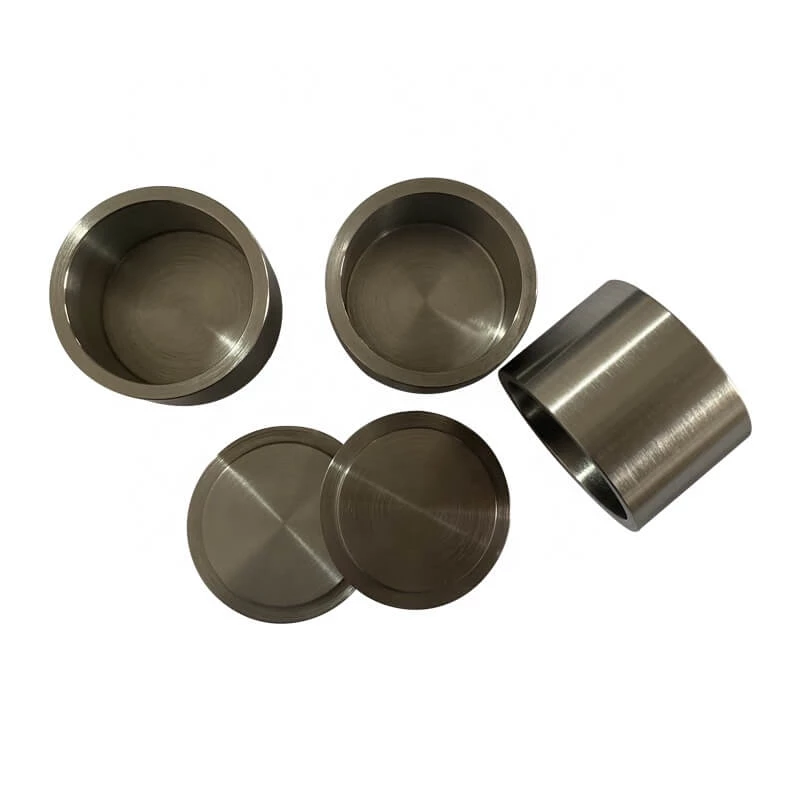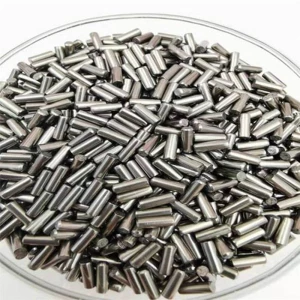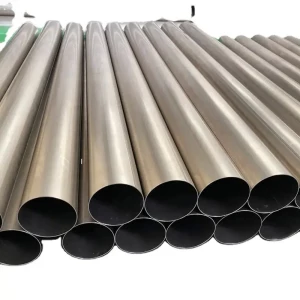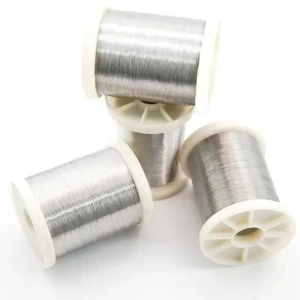Application and application of niobium
Iron and steel industry
About 85% ~ 90% of the world's niobium is used in iron and steel production in the form of niobium. Adding only 0.03% ~ 0.05% niobium to steel can increase the yield strength of steel by more than 30%. Niobium can also achieve the dispersion distribution of precipitates by inducing precipitation and controlling the cooling rate, and adjust the toughness level of steel in a wide range. Therefore, adding niobium to steel can not only improve the strength of steel, but also improve the toughness, high temperature oxidation resistance and corrosion resistance of steel, reduce the brittleness transition temperature of steel, so that steel has good welding performance and forming performance.
Superconducting materials industry
Some compounds and alloys of niobium have high superconducting transition temperature, so it is widely used in the manufacture of various industrial superconductors, such as superconducting generators, accelerator high-power magnets, superconducting magnetic accumulators, nuclear magnetic resonance imaging equipment, etc. At present, the most important superconductors are niobium-titanium and niobium-tin, which are widely used in magnetic resonance imaging apparatus for medical diagnosis and nuclear magnetic resonance apparatus for spectral line analysis.
Aerospace industry
The aerospace industry is the main application field of high purity niobium, mainly used in the production of rockets, spacecraft engines and heat-resistant components. Niobium and tantalum alloys have good thermal strength, thermal resistance and processing properties, and are widely used in the manufacture of aircraft engine parts and gas turbine blades.
Atomic energy industry
Niobium is a very suitable material for nuclear reactors because of its good thermal conductivity, high melting point, good corrosion resistance and low neutron capture cross section. The main uses of niobium in the atomic energy industry include: cladding material for nuclear fuel, alloy for nuclear fuel, structural material for heat exchangers in nuclear reactors.
Electronics industry
Niobate ceramics can be used to make capacitors, lithium niobate, potassium niobate and other compound single crystal is a new type of optoelectronics and electronics crystals, with good piezoelectric, thermoelectric and optical properties, is widely used in infrared, laser technology and electronics industry. In addition, niobium has a high melting point, strong ability to emit electrons, and has the ability to inhale, which can be used to make vacuum tubes and other electric vacuum devices.
Medical field
Niobium has good resistance to physiological corrosion and biocompatibility, will not occur with a variety of liquid substances in the human body, and almost will not damage biological tissue, for any sterilization method can adapt, so often used in the manufacture of bone plate, skull plate bone screw, implant root, surgical equipment, etc.
Other applications
In the chemical industry, niobium is a high quality acid resistant and liquid metal corrosion resistant material, can be used to make digesters, heaters, coolers and so on. In addition, niobic acid is also an important catalyst.
Niobium is also used in the foundry industry, its main role is to form hard carbide (good for wear) and change the shape and size of graphite sheet, so it is often used in the manufacture of automobile cylinder caps, piston rings and brake pads. Niobium is also used in the manufacture of lenses in the optical industry because it helps to increase the transmittivity of lenses.
Product Description
| Item name | High purity and High quality Niobium crucible for melting lead |
| pure tungsten | Nb Purity: 99.95% |
| Dimension & Cubage | According to your needs or drawings |
| Delivery time | 10-15 days |
| Application | 1.smelting of rare earth metals 2.heating elements of induction furnace 3. solar energy and sapphire. |
| Technique (Type) | Sintering,stamping, spinning. |
| Working temperature | 1800 - 2000 DC |
| Delivery time | 10-15days |
| Special sizes can be manufactured based on customers' requirements. | |
| Dimensions and Tolerance | ||||
| Supply Situation | Dimensions | Tolerance | ||
| Diameter(mm) | Height(mm) | Diameter(mm) | Height(mm) | |
| Sintering | 10-500 | 10-750 | ±5 | ±5 |
| Forging | 10-100 | 10-120 | ±1 | ±2 |
| Sintering and Machining | 100-550 | 10-700 | ±0.5 | ±1 |
Chemical Requirements
| Content, Max, Weight % | ||||
| Element | R04200 Unalloyed Niobium | R04210 Unalloyed Niobium | R04251 (Reactor grade niobium-1% Zirconium) | R04261 (Commercial grade niobium-1%Zirconium) |
| C | 0.01 | 0.01 | 0.01 | 0.01 |
| O | 0.015 | 0.025 | 0.015 | 0.025 |
| N | 0.01 | 0.01 | 0.01 | 0.01 |
| H | 0.0015 | 0.0015 | 0.0015 | 0.0015 |
| Fe | 0.005 | 0.01 | 0.005 | 0.01 |
| Mo | 0.01 | 0.02 | 0.01 | 0.05 |
| Ta | 0.1 | 0.3 | 0.1 | 0.5 |
| Ni | 0.005 | 0.005 | 0.005 | 0.005 |
| Si | 0.005 | 0.005 | 0.005 | 0.005 |
| Ti | 0.02 | 0.03 | 0.02 | 0.03 |
| W | 0.03 | 0.05 | 0.03 | 0.05 |
| Zr | 0.02 | 0.02 | 0.8~1.2 | 0.8~1.2 |
| Nb | Remainder | Remainder | Remainder | Remainder |
Feature
1. Low thermal expansion;
2. High density;
3. Good corrosion resistance
4. High strength;
5. Low resistivity;
6.The surface roughness of tooled crucibles does not exceed Rz 6.3;
7.The use temperature below 2450ºC in vacuum or deoxidize atmosphere.
8.Manufactured based on customers' requirements
Application
1. Used for sapphire single crystal growth furnace;
2. Applied for quartz glass melting furnace;
3. Used for rare earth smelting furnace;
4. Used for sintering metal mold of high melting point;
5. Widely used in other following industries:
Ceramics and metallurgical industries, machinery processing and light dustries.
Abbiamo più categorie per te. Se non riesci a trovare i prodotti che desideri sopra, compila il modulo e dicci quali prodotti desideri importare dalla Cina.






















